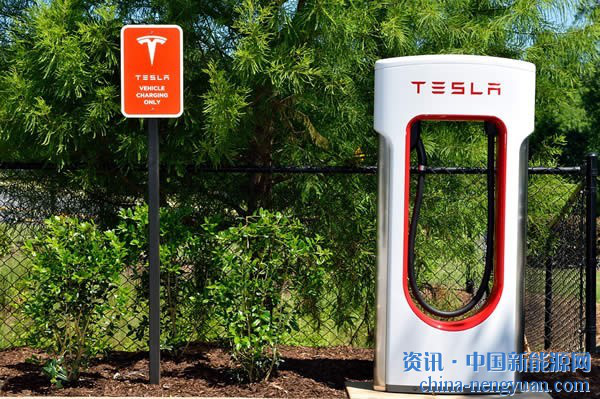Promote the construction of charging pile facilities "three axes"
Under the "new infrastructure", the development of charging piles can no longer be a simple scale expansion. At the present stage, the development of charging piles should not only improve charging speed, ensure charging safety and improve user satisfaction, but also adopt new technologies such as new generation charging technology, artificial intelligence and new energy to integrate into the construction of intelligent transportation, smart city, smart energy and other related fields.
In short, it is necessary to speed up the construction of charging facilities through technology, policy and project "three axes".
Apply emerging technologies
According to the statistics of China Charging Alliance, by the end of 2019, there were 1.219 million charging piles in China. As the number of new energy vehicles continues to grow, the construction of charging piles as supporting facilities still lags behind, resulting in relatively insufficient supply of charging piles. This "new infrastructure" includes charging piles for new energy vehicles, and various localities have speeded up the introduction of relevant policies. Tianjin, Guangxi and other provinces and cities have introduced implementation plans for charging infrastructure construction, attracting social capital to enter the charging pile construction field, and the construction of charging infrastructure for new energy vehicles in China has obviously accelerated, with greater potential growth space in the future.
At the present stage, we should pay attention to the integration of scientific and technological achievements and the construction of charging pile facilities to avoid the simple expansion of traditional charging facilities. It is necessary to enhance the resource integration of charging pile construction in the fields of intelligent transportation, smart city and smart energy.
First, we should pay attention to the application of new generation charging technology. The new generation charging technology, which is characterized by improving charging service experience, charging service quality and charging safety, is the mainstream trend in the future. High-power charging technology can further shorten the charging time; Wireless charging technology can make charging more convenient; Charging roaming interconnection technology will realize cross-platform charging function; Technology such as charging electrical safety and information safety will realize safe and reliable charging. The implementation of "new infrastructure" will accelerate the release of the demand for a new generation of charging technology breakthroughs and promote the technological upgrading of the charging pile industry.
Second, we should pay attention to the application of new generation information technology. In recent years, the development of new generation information technologies such as Internet of Things, big data and 5G communication has accelerated, which makes it possible to use intelligent charging piles in road traffic, urban management and other fields. The "new infrastructure" also includes infrastructure construction such as 5G, so the new generation of information technology will also accelerate its development, thus accelerating the construction of charging facilities and deeply integrating with the construction of urban transportation facilities and power grid facilities. It can be predicted that the development of charging pile technology will play an important role in the construction of smart transportation and smart city.
Third, we should pay attention to the application of new power grid technology. Charging piles should be built as an important platform for real-time information exchange between power users and power grid. It will be more convenient for electric vehicle charging to be included in DSM, so as to realize the participation of electric vehicles in power operation to cut peak and fill valley, consume new energy power such as photovoltaic and wind power locally, improve the efficiency of power grid, and promote the efficient and low-carbon development of energy industry.
Implement policy guidance
At the policy level, it is necessary to strengthen planning guidance and further clarify the construction direction of digitalization and informationization of charging piles. The construction of charging infrastructure involves land planning, energy, transportation and other government departments, which belongs to cross-sectoral and cross-industry supervision. Moreover, the charging technology is updated rapidly and the development of the industry changes greatly. Therefore, the guidance of industry development should be strengthened. It is particularly necessary to timely and accurately reflect the new technologies and trends of industry development.
It is suggested to summarize the application results of emerging technologies obtained by charging piles in recent years, revise the industry guidance document "Development Guide of Electric Vehicle Charging Infrastructure (2015-2020)" in time, and combine the charging infrastructure with the industrial policies in the fields of smart energy, intelligent transportation and new smart city, and support high-power charging, intelligent charging network and energy storage charging in terms of power grid construction planning and layout, power price concessions and use of financial subsidy funds. In addition, strengthen the standardization and guidance of local government charging infrastructure construction work, and form a different development atmosphere from the traditional infrastructure, which emphasizes the assessment of charging pile quantity index. "New infrastructure" attaches importance to the application of new technologies and new models, and avoids the phenomenon of low-level redundant construction in charging pile construction.
Promote project demonstration
At the project level, we should seize the development opportunity of "new infrastructure", implement a number of key demonstration projects throughout the country, and explore a new development model in the field of charging piles. Build a number of key projects that can be popularized and replicated, and accumulate relevant experience to promote and share in the whole country.
One is the demonstration project of high-power charging. Summarize the high-power charging projects of electric vehicles in Beijing, Shenzhen, Changzhou and other places, and support the development of "vehicle-pile-network" test to test the stability and safety of vehicle production technology, power grid technology and charging equipment. Develop high-power charging standards, especially to support the application in commercial vehicles, taxis, logistics vehicles and other operating vehicles, as well as passenger cars with long cruising range. Establish a demonstration project of high-power charging, verify the feasibility of power grid, battery, charging equipment and standards, and promote the large-scale application of high-power charging technology.
Second, the demonstration project of charging piles applied in smart cities. Develop intelligent charging devices such as multimedia charging piles, mobile charging piles, intelligent charging systems integrating optical storage and charging, charging piles and smart street lamp charging piles, and promote the construction of charging piles into new terminals in smart cities to realize seamless access to the Internet of Things and smart cities. New generation information technologies such as 5G are adopted, and intelligent hardware such as monitoring, alarm, information and big data is equipped to provide access system support.
Third, the demonstration project of urban electric vehicle energy storage and charging. Drawing lessons from the construction experience of power demand side response projects in developed countries such as the United States, we will promote direct power trading pilots in Zhejiang, Jiangsu and other regions, support charging facility operators to participate in direct transactions for large users, and cooperate with power grids, automobile manufacturers and charging intelligent technology companies to carry out charging demand response projects and business model pilots. By using electric vehicle network access technology (V2G), electric vehicles are used as distributed energy storage units to participate in power grid regulation in the form of charging and discharging, which can be reversely fed by electric vehicles at peak power consumption to realize peak shaving and valley filling.
Fourth, photovoltaic energy storage charging demonstration project. We will further promote the smart photovoltaic demonstration enterprises and demonstration projects of the Ministry of Industry and Information Technology, summarize various energy complementary microgrid demonstration projects such as Neusoft Carrier Park Microgrid and Teruide Smart Photovoltaic Microgrid System, develop smart electric piles, and promote new energy vehicles to digest and use green energy such as photovoltaic, wind energy and water energy, and promote them in the whole society. (Transferred from CCID Think Tank, Author: He Rongliang)
LATEST NEWS
- Xi Jinping sent a congratulatory letter to the 2019 World New Energy Vehicle Conference 2020-11-24 17:42:36
- Prospect of charging pile construction under new infrastructure 2020-11-24 17:40:17
- "Replacement" of Electric Speed-up Charging Pile 2020-11-24 17:27:20
- Why is the future charging pile market of new energy vehicles predicted to be a "bull market"? 2020-11-24 17:21:50
- Promote the construction of charging pile facilities "three axes" 2020-11-24 17:18:05
- To activate the rural new energy automobile market, we must solve the "mileage anxiety" 2020-11-24 17:14:00


Hangzhou guokong electric power technology co., ltd Service hotline: 0571-81969856 / 0571-87973887Company address: 3/F, Building 1, Qianjiang Pentium Science and Technology Park, No.16 Xiyuan First Road, Xihu District, Hangzhou


